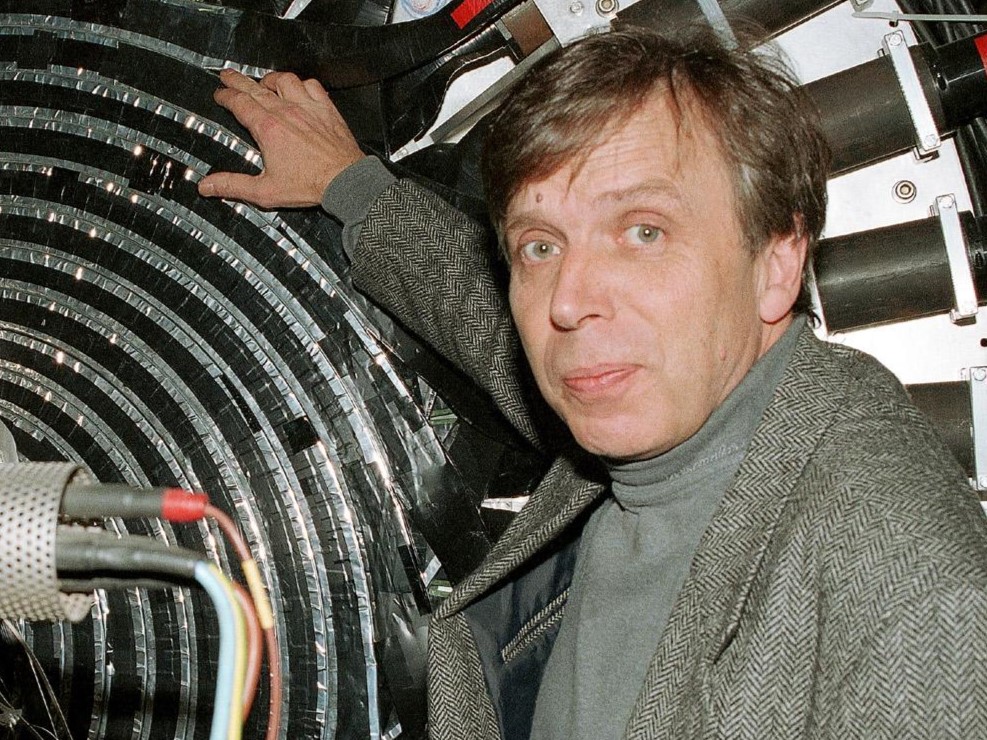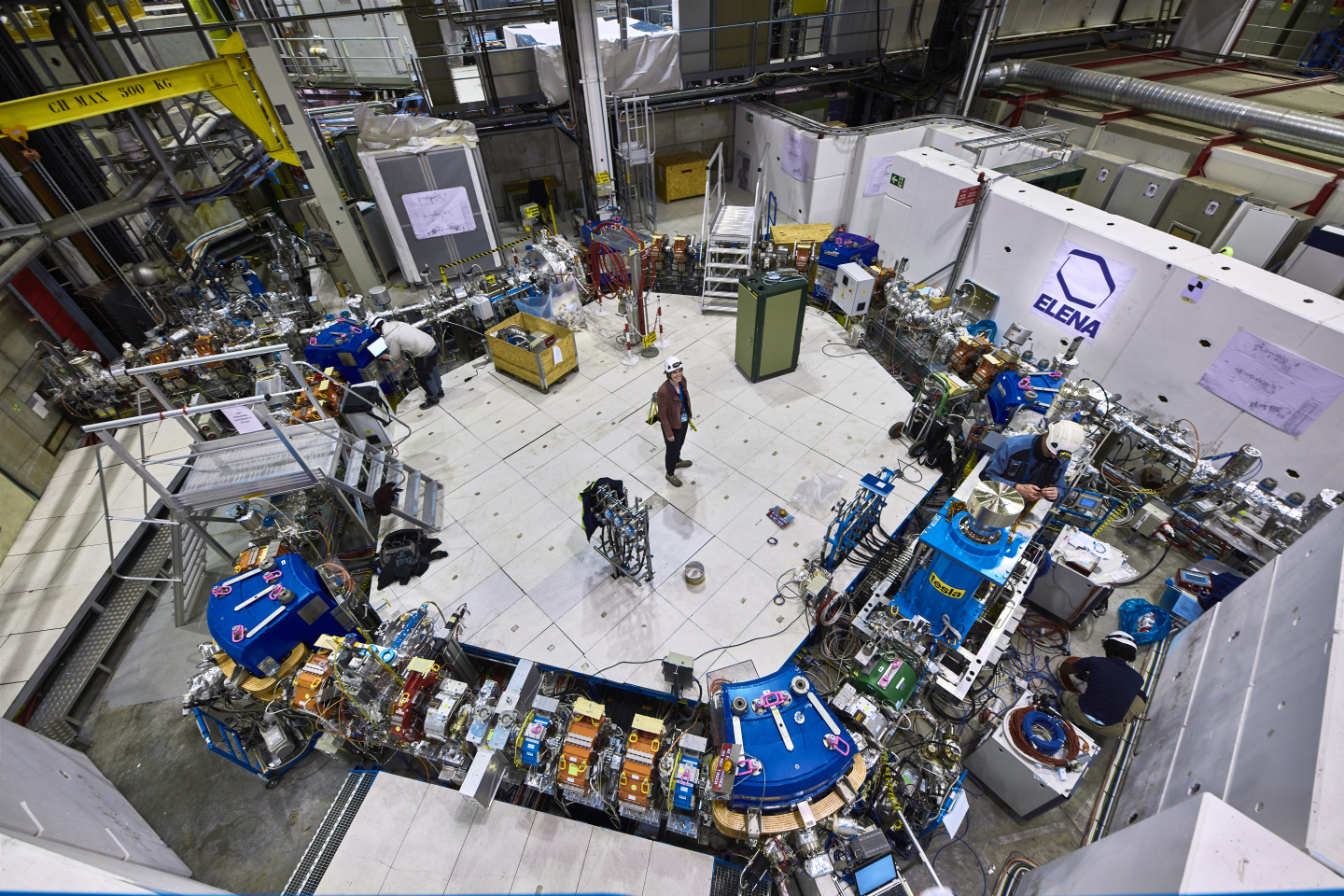CERN70: Into the antiworld
3 September 2024 · Voir en français
Part 16 of the CERN70 feature series. Find out more: cern70.cern
Walter Oelert led the team of researchers who produced the world’s first atoms of antihydrogen in 1995

For each particle, there exists an antiparticle with opposite properties, in particular electric charge. This has been well established, ever since Paul Dirac's theoretical predictions in the late 1920s. Over the three decades that followed, scientists discovered the constituents that would make up an antimatter atom: the antielectron (or positron), the antiproton and the antineutron. But it was not until 1995 that a CERN collaboration succeeded in making, for the first time in the world, a few atoms of antihydrogen, each consisting of one positron and one antiproton.
These first antihydrogen atoms were observed by the PS210 experiment, in the Low Energy Antiproton Ring (LEAR). This experiment was a real challenge, both for the experimenters and the LEAR operation team, but they succeeded, although the antimatter atoms were produced with nearly the speed of light and could not be used for further investigations of the properties of antimatter. On 4 January 1996, CERN and the institutes participating in the experiment issued a press release announcing the observations. The news, which seemed to come straight out of a science fiction film, went round the world.
This success, and the considerable interest shown by scientists and the public, opened up a new field of study and launched the development of a new machine. The Antiproton Decelerator (AD) supplied several experiments with antiprotons from 2000 onwards. Just two years later, exactly 100 years after the birth of Paul Dirac, two collaborations announced the successful production of many “cold” antihydrogen atoms. Since then, experiments on antimatter have been increasingly successful, measuring the fundamental parameters of antiprotons and antihydrogen with ever greater precision. A second decelerator, ELENA, which came into service in 2020, further slows down the antiprotons to make it easier to study them.
Recollections
No one in that small new collaboration will ever forget those exciting days in 1995. Every part of the experimental set-up would have to work; there would be no second chance.
Walter Oelert

Walter Oelert, then a researcher at the Jülich Research Centre in Germany, led the team who worked on the PS210 experiment. This experiment was rapidly assembled in 1995 to take advantage of the last weeks of the LEAR machine, in order to produce the world’s first atoms of antihydrogen. He then took part in one of the pioneering experiments on antimatter in the early 2000s and was one of the initiators of the new ELENA antimatter decelerator.
“I’d like to quote Werner Heisenberg from 1972: “the discovery of antimatter was perhaps the biggest jump of all the big jumps in physics in our century”. He refers to the trendsetting predictions of Dirac, followed by the discovery and observation of the positron and antiproton in 1932 and 1955 respectively, with antihydrogen still awaiting its first observation.
During the early 1990s, the JETSET collaboration was running an experiment with antiprotons at LEAR. At a coffee break in autumn 1993, three accelerator scientists, Michel Chanel, Pierre Lefèvre and Dieter Möhl, reported that they had heard about an idea of how antihydrogen could be produced with just the experimental set-up that the scientists were using on JETSET, with some additional detection systems. The JETSET collaboration was not interested in joining this enterprise, but after a few parasitic tests some of us were convinced that it must work and finally the LEAR programme committee allocated 48 hours of beam time for the experiment PS210 for producing antihydrogen atoms in flight.
No one in that small new collaboration will ever forget those exciting days in 1995. Every part of the experimental set-up would have to work; there would be no second chance. To add to the pressure, the press had already got hold of what was planned before we had any interactions that could possibly create the first antihydrogen atoms observed on Earth.
We finally took data during a period of four weeks, two hours a day. Then it became really hectic. Offers from journals to publish the successful production of antihydrogen atoms were made even before the final results were available! A press release was prepared although the referee of the scientific paper was not willing to accept proof of the observation of antihydrogen atoms based only on the coincident registration of the annihilation signals from a positron and an antiproton, the constituents of an antihydrogen atom. However, further signals of energy and momentum determined during the experiment convinced both the referee and the editor, and the first observation of the production of atoms formed from antimatter particles could be announced. The public interest was enormous, the result made it to headlines in many newspapers including the “New York Times” and “Der Spiegel”.
One of the many interviews should be quoted:
- Journalist: Is it correct that the energy density of matter and antimatter is the highest one can think of?
- Oelert: Yes, certainly in principle that is true.
- Journalist: Does that mean that one can make an antimatter-bomb much much stronger than an atomic bomb?
- Oelert: Oh, such an application never ever came to my mind, let me think about it more precisely. (Short pause) No it is impossible for two reasons. It would be technically impossible to store such an amount of antimatter and the production efficiency would be much too low for any relevant amount of antimatter such that it can be used as an energy source. No way.
In the final article, the journalist wrote something like: "Oelert thinks about an antimatter-bomb". But that is totally unrealistic, crazy science fiction and by no means my business. For basic science however, it was a great step towards the real work of producing ample amounts of cold antihydrogen and testing of fundamental symmetries. Seven years after this first observation, two experiments at the new AD complex successfully produced large numbers of cold antihydrogen atoms for the first time ever.

Approval for the ELENA upgrade was challenging. Luckily, after my presentation to the CERN Scientific Council, the Director-General rested a hand on my shoulder and said: “This was exactly the talk I wanted, thank you”. ELENA began in 2020 and now decelerates antiprotons from the AD even further, allowing many more to be trapped by the experiments and ushering a new, exciting era of antimatter research.
Now, almost 30 years after the fabrication of the first antihydrogen atoms, comparing hydrogen to antihydrogen atoms constitutes one of the best ways to make precise tests of differences between matter and antimatter. Their spectra are predicted to be identical, so any tiny differences would open a window to new physics.”
----
This interview is adapted from the 2004 book “Infinitely CERN”, published to celebrate CERN’s 50th anniversary, updated with the help of Walter Oelert in 2024. Heisenberg’s quote appears in The Physicist's Concept of Nature (1973), Vol. 1972, 271.
